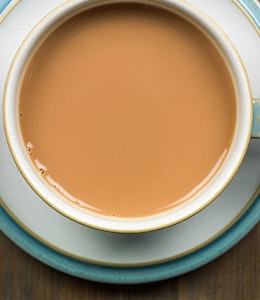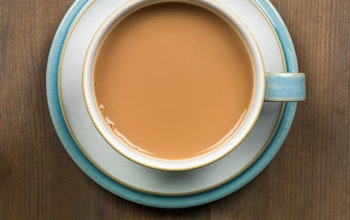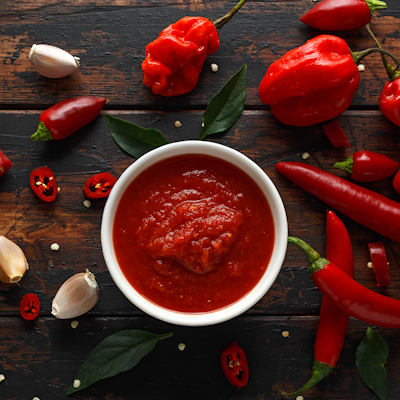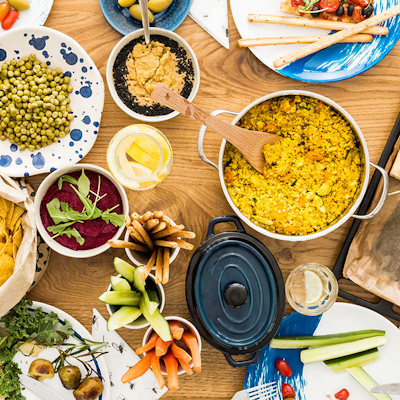World’s Most Famous Teas
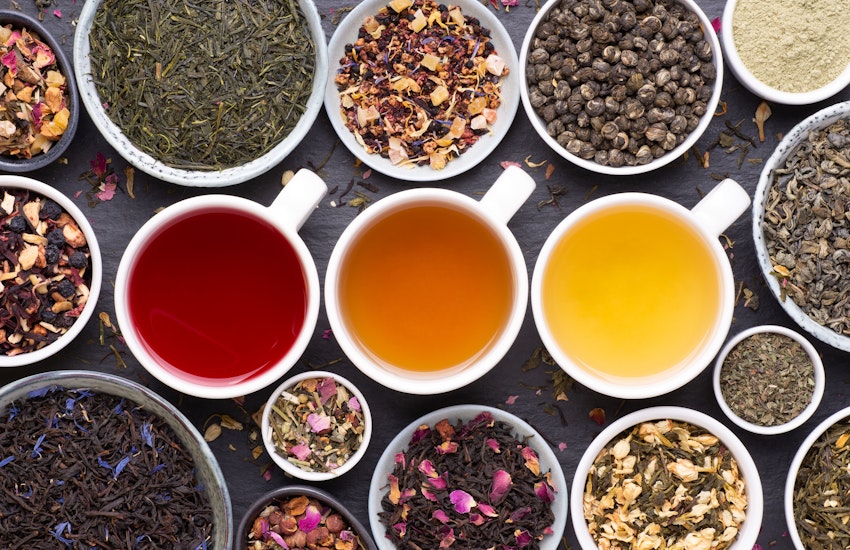
Given that we’re famously a nation of tea lover it's not surprising that Erudus...
...have aleady rounded up some fascinating facts about Britain’s favourite beverage and now we’re exploring how Caterers can make the most of the drink’s popularity.
In the past when you said the word tea most people would conjure up an image of a simple cup of builders tea, but as with most areas of the food industry consumers tastes have grown more varied and demanding. Essentially, it's in a cafe or eatery’s best interests to offer up a selection of teas that cover all tastes and needs. But there are hundreds of teas out there, so how do you choose the right combination to cover all your bases without buying more than you need?
We’re here to help - we’ve rounded up the world’s most famous and popular teas so you can find out all about their flavours, benefits and tips for making them….
The world’s most popular teas are:
- Darjeeling
- Chai
- English Breakfast
- Earl Grey
- Green tea
- Matcha tea
- Oolong
- Ceylon
- White tea
- Turmeric
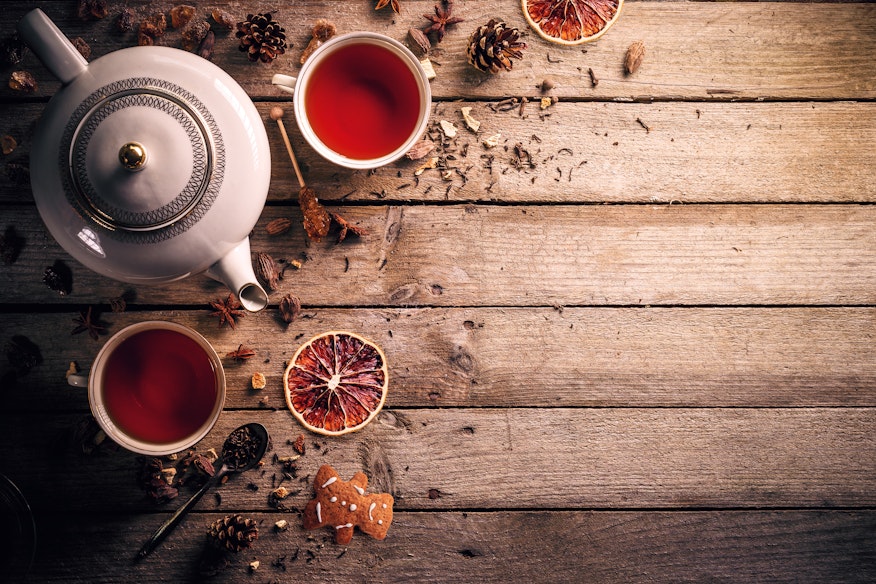
Is tea an allergen?
No, tea does not contain any of the 14 major food allergens. Tea allergies are rare but they do exist, and usually relate to the tannins found in tea. Tannins are biomolecules that bind to proteins, and their natural purpose is to put animals off eating a plant before it is ripe. They are generally found in foods and drinks such as tea, coffee, wine and fruit.
Is tea vegan?
Tea comes from a plant - or a blend of plants - making it totally vegan. However, some blends or varieties of tea contain honey or traces of honey. Honey is generally not considered to be vegan.
Is tea good for you?
Yes, tea has many health benefits. You can find out about the health benefits of individual tea varieties below.
And now on to the world’s most famous teas...
Darjeeling
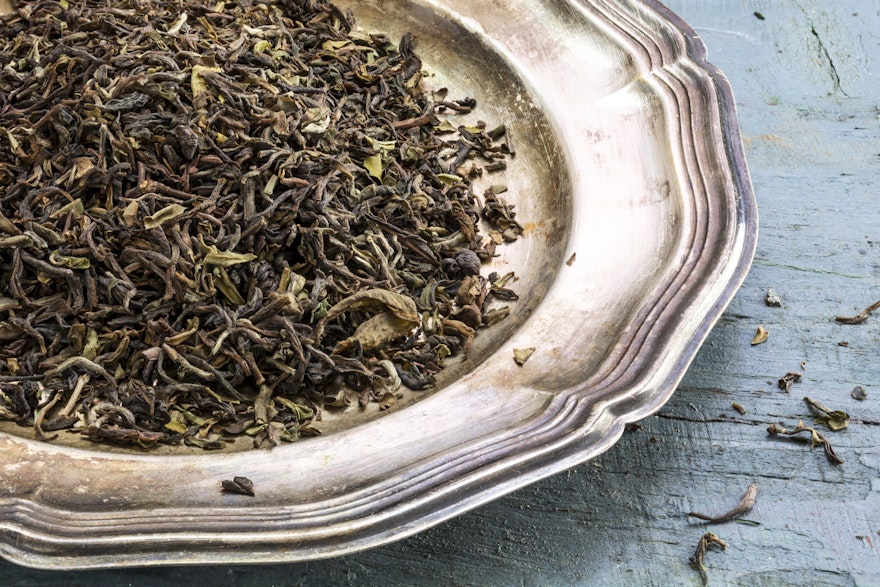
What is Darjeeling?
Darjeeling tea, sometimes known as the ‘champagne of teas’ is a black tea made from Camellia sinensis, and grown and processed in the Darjeeling (or Kalimpong District) in West Bengal. Since 2004 this description has been narrowed down even further to a registered geographical indication - to be described as Darjeeling tea the tea leaves must have been produced on specific estates within the Darjeeling and Kalimpong area. The Camellia sinensis plant was introduced to the region in the mid 19th century by the British, who had smuggled tea seeds and plantings out of China in order to establish a source of tea outside of that country.
What does Darjeeling taste like?
Darjeeling is mostly associated with a sweet taste and floral aroma. It has a light colour, thin texture and musky notes. It sometimes has fruity and citrus flavours and has also been likened to muscat wine.
Darjeeling benefits
Like most teas, Darjeeling is rich in antioxidants. This can provide the body with any number of benefits - healthier skin, boosting the immune system, reducing the risk of heart disease and some cancers, strengthening bones, and maintaining weight loss among them. Tea also releases caffeine slower and steadier than other drinks such as coffee, so the drinker is less likely to experience a caffeine spike or crash, or energy slump.
Darjeeling tips
- As a very subtle tea it’s important not to put Darjeeling in a pot that has been scrubbed with soap or harsh cleaning agents. These might infiltrate and damage its flavour, so play it safe and clean the pots used to serve it with a clean damp cloth.
- Never serve Darjeeling with milk already added - most tea aficionados wouldn’t be caught dead drinking their Darjeeling with milk because of it’s subtle, delicate taste. However casual tea drinkers often prefer to drink any variety with milk, so have some on the side for the consumer to add at their discretion.
- Darjeeling is the perfect tea for brunch, since it’s ideally drunk mid-morning.
Chai
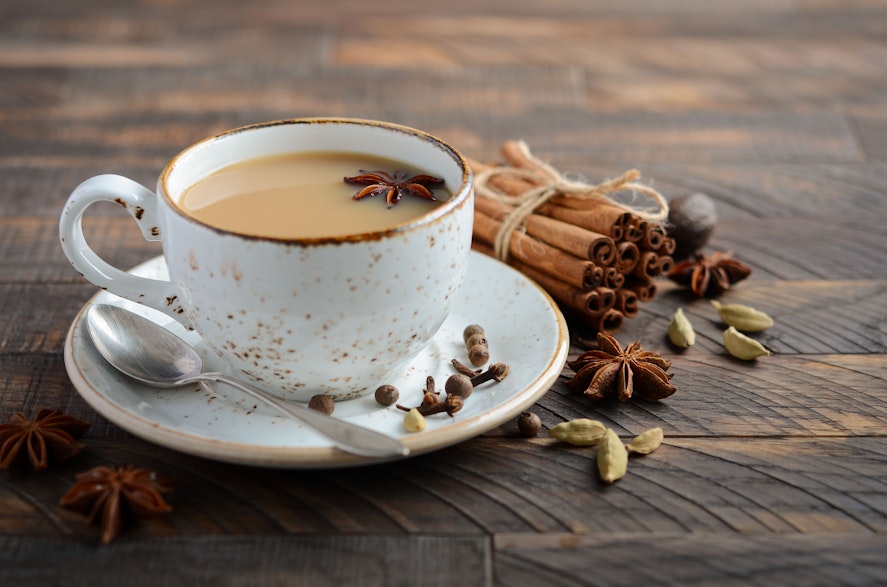
What is Chai?
Masala chai, to use its proper term (Chai is simply the Hindi word for tea, it’s the ‘Masala’ mix of spices that give this drink its distinctive taste) is a South Asian blend of black tea, water and various herbs and spices. There is no fixed recipe, with many variations across different regions and families, but there are five components nearly always present - tea, water, milk, sugar and a spice blend that includes ginger, cardamom and black pepper.
What does Chai taste like?
Masala chai has a spicy flavour thanks to the ginger and pepper, and some people also like to add cinnamon too. This spiciness compliments the body of the strong black tea. With a blend of black tea, ginger, cloves, cardamom and cinnamon, our chai is a beautiful balance of smooth and spicy. The bold spiciness of ginger and strong sweetness of clove shine through, but the spices don't overshadow our full-bodied black tea leaves.
Chai benefits
All chai Masala varieties contain ginger and black pepper, both of which are known to aid digestion and gut health. In fact, ginger has long been used as a natural aid for nausea and an upset tummy, and as such Masala chai is a much better than most black teas at settling the stomach.
Chai tips
- Always use fresh ginger in your Masala chai recipe. Grate it to get the most flavor out of the pulp and juices.
- For the most authentic Masala Chai experience, use a saucepan rather than a teapot for brewing. You should boil the tea and spices with the milk for at least 10-15 minutes until the flavours infuse.
- Gur is the best sugar to sweeten your chai Masala with - it not only adds sweetness but it contains more antioxidants and is more nutritious than other sugars.
Earl Grey
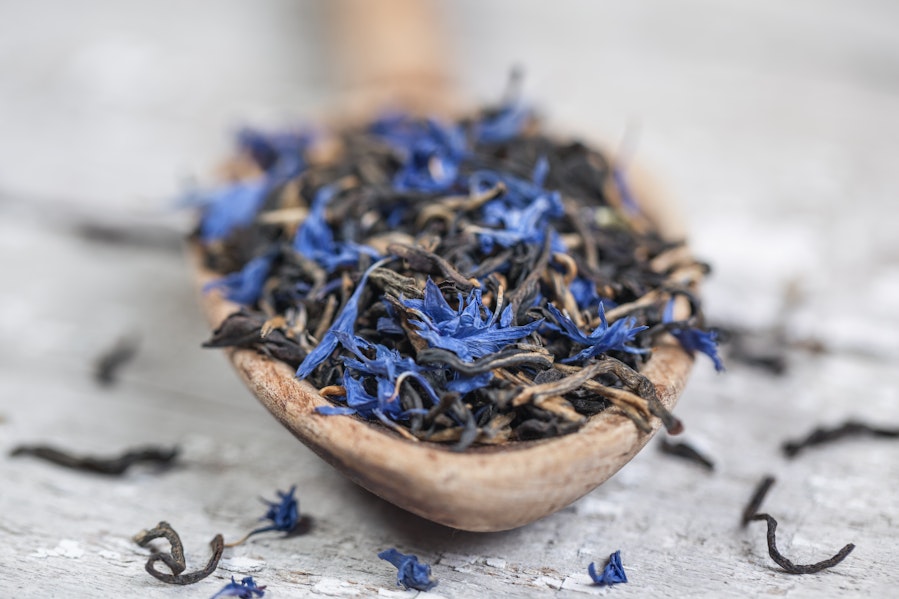
What is Earl Grey ?
Earl Grey tea is a black tea flavoured with bergamot oil, thought to be named after Charles Grey, 2nd Earl Grey and British Prime Minister in the mid 19th century. Legend has it that Grey received it as a gift after ending the monopoly held by the East India Company on trade between Britain and China, and advertisements for Earl Grey tea by Charlton & Co of Jermyn Street appeared in London in the 1880s, though the tea is thought to have been in production at least 50 years earlier.
What does Earl Grey taste like?
Earl Grey has a floral flavour, as well as strong citrus notes that comes as a result of the bergamot oil infusion, bergamot oil being derived from the rind of the bergamot orange. Some people describe the Earl Grey taste as a cross between oranges and lemons, with hints of grapefruit and lime.
Earl Grey benefits
Earl Grey is a black tea, which is known for lowering blood cholesterol and decreasing blood pressure. Additionally, bergamot has flavonoids, which have inflammatory properties. However, consumers need to be careful when consuming Earl Grey - if too much bergamot is consumed it can lead to lowered potassium levels, resulting in cramps and muscle twitching.
Earl Grey tips
- For the perfect cup of Earl Grey use cold, fresh water.
- Earl Grey tea tastes best when infused with water that is just below boiling point, so be sure to leave for a few minutes in the kettle after boiling.
- It’s traditional to serve Earl Grey tea with a slice of lemon and sugar - to really bring out the bright citrus flavour.
English Breakfast
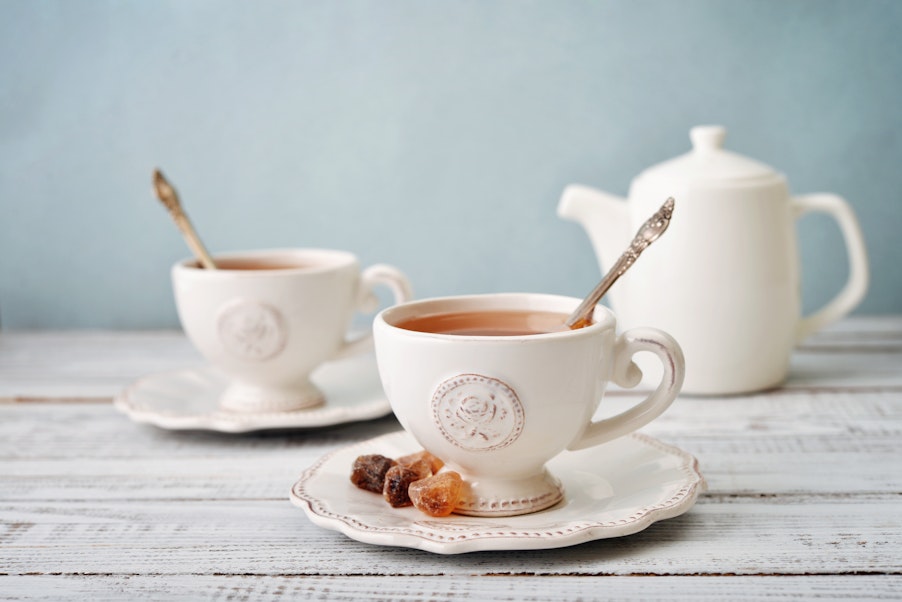
What is English Breakfast tea?
English breakfast tea is a popular blended tea, thought to have originated in Assam, Ceylon and/or Kenya. It’s a blend specifically created to go well with milk, sugar and a rich English breakfast (sausages, bacon, eggs, black pudding and beans). Thought to have been around since the 18th century, one popular theory to its origin states that a Scottish tea master created it as a strong blend suitable for bleary mornings, another is that it was created in colonial America. Whichever it is, it’s been a British favourite for at least 100 years.
What does English Breakfast tea taste like?
English Breakfast tea is strong, which adds to the idea of increased ‘alertness’ after drinking it in the morning. It can be sweet or bitter depending on whether sugar has been added, but its most defining characteristic is being full-bodied with floral undertones.
English Breakfast tea benefits
Polyphenols are an antioxidant prominent in English breakfast tea that promote good bacteria growth within the gut. English Breakfast tea is also a strong black tea, thought to reduce the risk of stroke and coronary heart disease if drunk regularly. Containing half the caffeine of coffee, English Breakfast tea is also the perfect moderate way to ingest caffeine - and take advantage of its stimulant and memory boosting properties.
English Breakfast tea tips
- Want to make an iced tea? English Breakfast tea is the perfect choice. It’s robust, malty flavour make it the perfect pairing with ice cold milk for a summer treat.
- Don’t skimp on the steeping process - a longer steep will yield a stronger, richer flavour and a higher caffeine content.
- English Breakfast tea can really only be steeped once if its to be enjoyed at its fullest flavour - and using reboiled water will mean less oxygen and a flat, dull taste.
Green tea
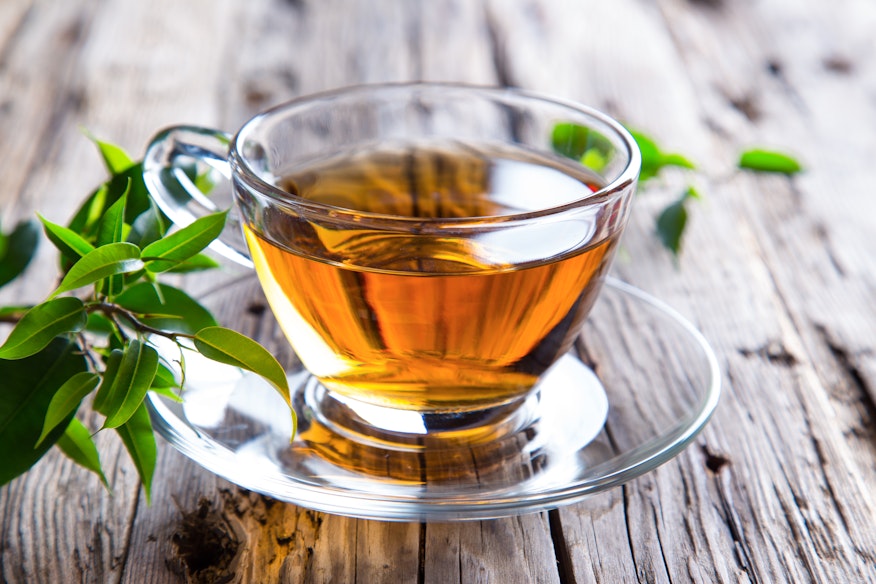
What is Green tea?
Green tea, like most teas, originated in China thousands of years ago, and comes from the Camellia sinensis plant. It differs from black tea in that it is made from buds and leaves that have not been withered and oxidised using the process used for black tea, leading to a more refreshing taste.
What does Green tea taste like?
Because most green tea is still picked by hand it is generally thought to be less bitter, and lighter than black tea. It has a sweet but earthy flavour and a refreshing quality.
Green tea benefits
Because green tea is less processed than black tea it possesses a number of additional health benefits - more antioxidants to protect the body against disease, amino acids that increase dopamine and alpha waves in the brain to improve mental alertness, and a catechin known as epigallocatechin-3-gallate that prevents cell damage. Many people also use green tea as a diet aid, as it is thought to stimulate the metabolism and inhibit angiogenesis, a process which fat tissue growth thrives upon.
Green tea tips
- Green tea is delicate, and easily burned, which leads to a spoiled flavour. To avoid this use water no hotter than 80 degrees celsius - if you don’t have a kettle that allows you to monitor temperature, allow boiled water to cool for a minute or two before using.
- Green tea gets more bitter the longer it is steeped, so never never steep for longer than 2 minutes.
- Green tea is a great drink for between meals - if drunk two hours before eating it will maximise nutrient intake and iron absorption.
Matcha
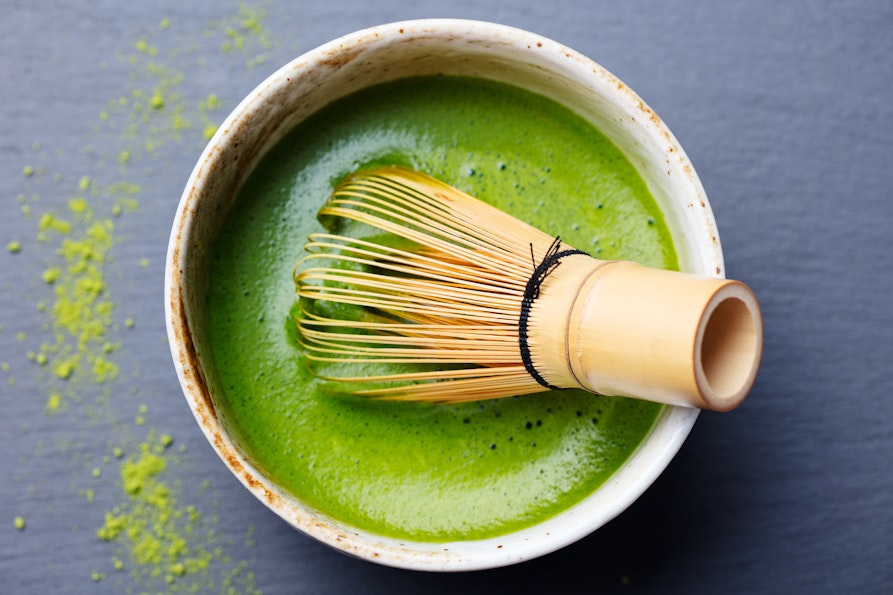
What is Matcha tea?
Matcha is a fine powder made from specially curated green tea leaves, using tea plants that are shade grown for up to a month before harvest. The powder form is the most distinctive aspect of matcha tea, which was first drunk in a tea ritual by Chan Buddhists.
What does Matcha tea taste like?
Matcha feels very smooth in the mouth, and has a very grassy or vegetal flavour because of the high chlorophyll content. It has a lingering sweetness and a taste that many people find exotic on first trying.
Matcha tea benefits
Matcha’s distinctive bright green hue comes from its high chlorophyll content, which means that it is great for detoxing the body. It is higher in antioxidants than even green tea, and is thought to help prevent heart disease, type 2 diabetes and other such diseases.
Matcha tea tips
- Your matcha should be bright green. If it is a dull or yellowish shade it's a sign the matcha is off and should be not be used for tea.
- Matcha should be whisked together with water, never stirred. A bamboo whisk (called a chasen) is preferable, and you should stay as close to the top of the bowl or cup as possible when whisking.
- Matcha can have different flavours depending on the tea leaves its been made with - if a consumer finds it too bitter suggest adding a spoonful of agave honey, and if it’s too sweet a spoonful of fresh grated ginger will balance out the flavour.
Oolong
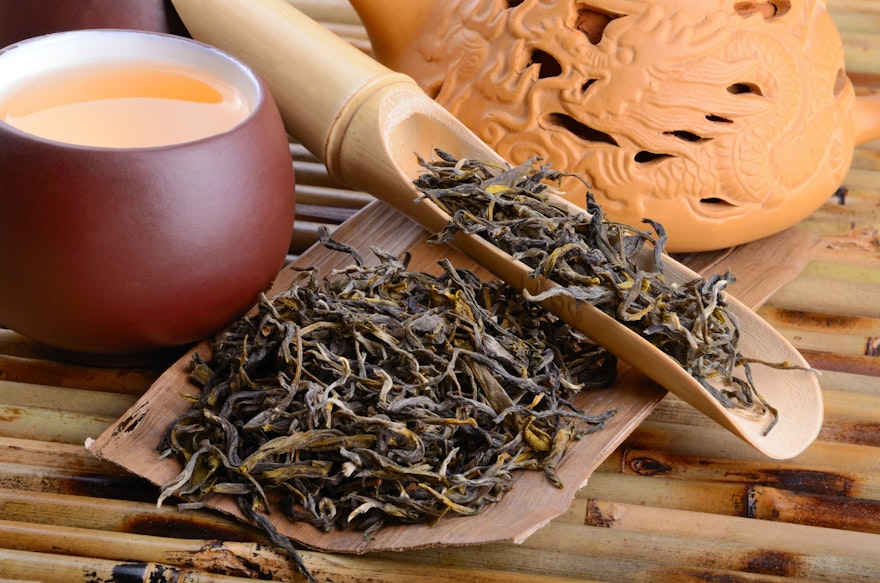
What is Oolong tea?
Oolong combines the flavoural qualities of green tea and black tea, and though a popular choice, it represents just 2% of the world’s tea supply. Like most teas, it is made from the Camellia sinensis plant but it is processed to be a mixture of the green and black.
What does Oolong tea taste like?
There is no singular Oolong flavour - different varieties taste closer to green tea or black tea depending on their production method and the horticulture of the area in which the leaves are grown. Some are sweet and fruity, others woody and thick. However an Oolong tea should not be as robust as a black tea nor as light and refreshing as a green tea.
Oolong tea benefits
Like other teas Oolong boasts many polyphenol antioxidants, which can decrease the risk of stroke, type 2 diabetes and heart disease, and maintain normal blood sugar levels.
Oolong tea tips
- Oolong tea is best consumed after a meal, or with a snack such as a scone or cake - basically no one should be drinking it on an empty stomach - that can cause headaches or nausea.
- Oolong is a great variety of tea to experiment with cold-water brewing - it will taste sweeter and contain less caffeine making it a good beverage for later in the day.
- Not all teas fare well on the second brew - Oolong is the exception. You can add more water to the tea leaves after the first brew and so long as an additional minute is allowed for the second, the flavour will surpass that of the first.
Ceylon
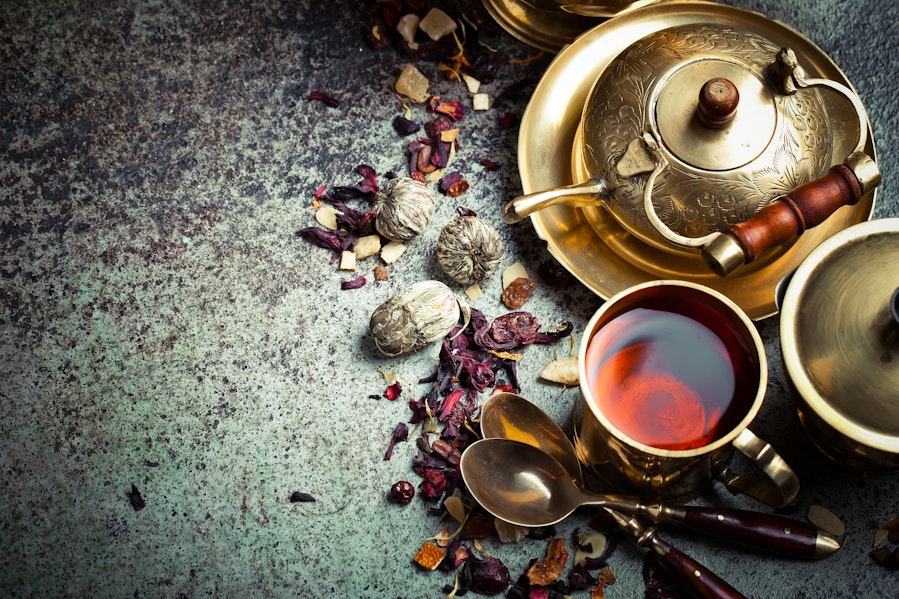
What is Ceylon tea?
Ceylon is a black tea derived from the Camellia sinensis plant, produced in the mountains of Sri Lanka. These geographical conditions give Ceylon tea its special flavour, and it is seen as a large part of the region’s cultural identity. Sri Lanka is currently the world’s fourth largest tea producer.
What does Ceylon tea taste like?
Ceylon is a bold, citrus flavoured tea that some also say has notes of chocolate. It is crisp, refreshing, and contains medium-full tannins.
Ceylon tea benefits
Ceylon tea is high in potassium (more so than other teas), which eases the strain on your arteries and can help reduce blood pressure. This means the risk of a heart attack or heart disease is decreased, and cholesterol is lowered.
Ceylon tea tips
- Ceylon is a tea that goes well with milk, but always make sure the milk has been warmed before adding it to the brew, as cold milk will bring down the drink’s temperature and impede the flavour.
- Though in recent years brown or demerara sugar has become fashionable to serve with tea, Ceylon tea is best sweetened with white sugar.
- Always keep Ceylon tea in an airtight container, away from heat and light, to avoid corrupting the leaves.
White tea
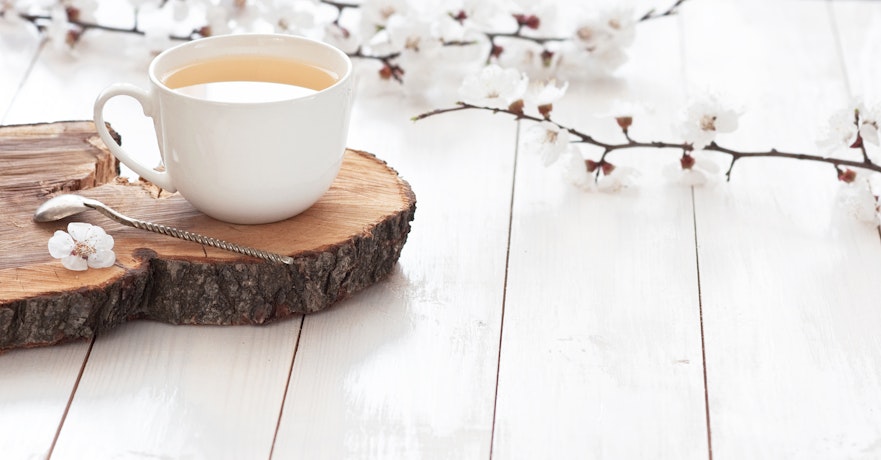
What is White tea?
There is no official definition of white tea - but generally the name refers to tea made from immature leaves and buds that have not yet fully opened, and therefore have not been dried out in the sun. And so because the tea has not been ‘oxidized’ it has a much lighter, sweeter flavour than black or green teas - even though they all come from the same plant. The name ‘white tea’ comes from the silver-white hairs on the unopened tea buds from which white tea is made. A bud or leaf needs to have a substantial amount of this fine hair to be considered good quality.
What does White tea taste like?
White tea is a light and refreshing beverage, with a flavour that is sweeter and less better than that of other teas. Though the taste is subtle and delicate, many people would also describe it as floral or fruity.
White tea benefits
White tea contains more antioxidants than any other type of tea, and is great for fighting free radicals - which are linked to skin ageing, poor immune systems and several harmful diseases.
White tea tips
- White tea is easy to burn, owing to its delicacy. To avoid a brew that is bitter and burnt, leave the kettle to cool for several minutes after boiling before pouring over the tea. The temperature for white tea should never exceed 85 degrees celsius.
- White tea can actually improve after several brewings - unlike most teas it won’t taste weaker or blander on its second or third brew, but instead new flavours will come through. Just be sure to increase the water temperature as you go.
- White tea is the perfect tea to serve alongside dessert, as its light sweetness will complement puddings without overpowering them.
Turmeric
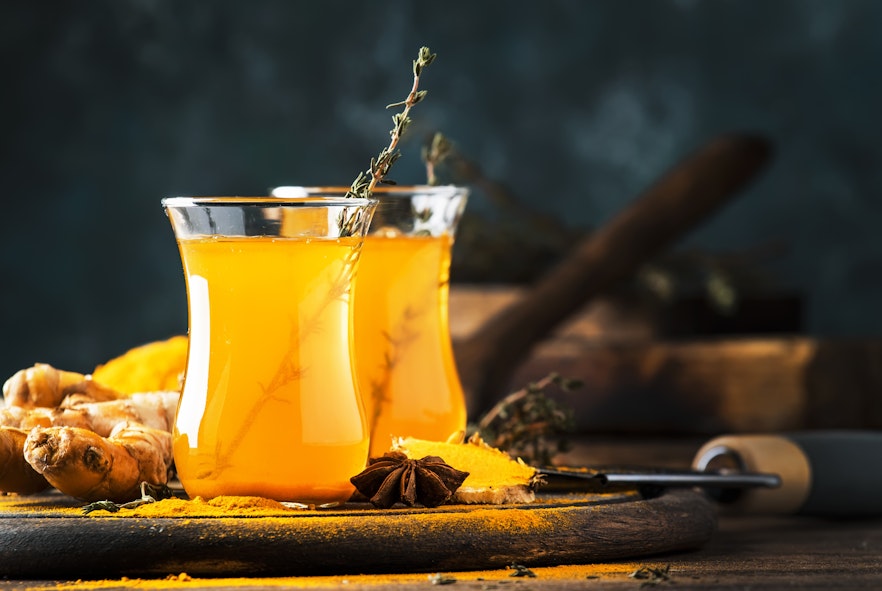
What is Turmeric tea?
Turmeric tea is a vibrantly coloured blended tea that’s also sometimes known as ‘golden milk’. It’s made by blending turmeric - the ground root of a flowering plant from the ginger family commonly used to flavour curry, with other ingredients such as lemon, ginger and cinnamon.
What does Turmeric tea taste like?
Turmeric tea has a strong, spicy flavour slightly reminiscent of curry (in which turmeric is often used liberally) or mustard. Depending on the other ingredients it might also have a citrus taste or strong notes of ginger.
Turmeric tea benefits
Curcumin is a chemical present in turmeric, and is known to have many health benefits. As a powerful anti-inflammatory and antioxidant it aids the immune system, can help with lung conditions like asthma, combats heart disease and improves digestion. It’s also thought to protect liver cells from damage.
Turmeric tea tips
- Turmeric tea contains zero or minimal caffeine, making it the ideal choice for those avoiding caffeinated drinks.
- Adding a pinch of black pepper to turmeric tea will help the body absorb curcumin, making it an even healthier option.
- Turmeric tea is a drink easily adapted to seasonal menus - cold with citrus fruits to make it an extra-refreshing summer beverage, or hot with cloves and cinnamon for warming festive cheer.
You may also be interested in…
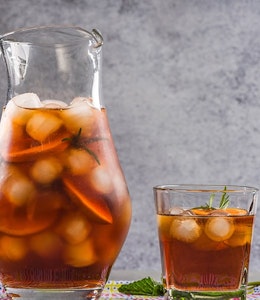
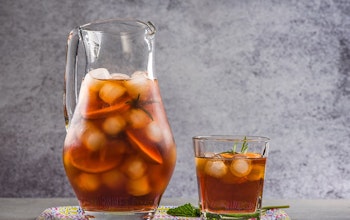
You may also be interested in…
